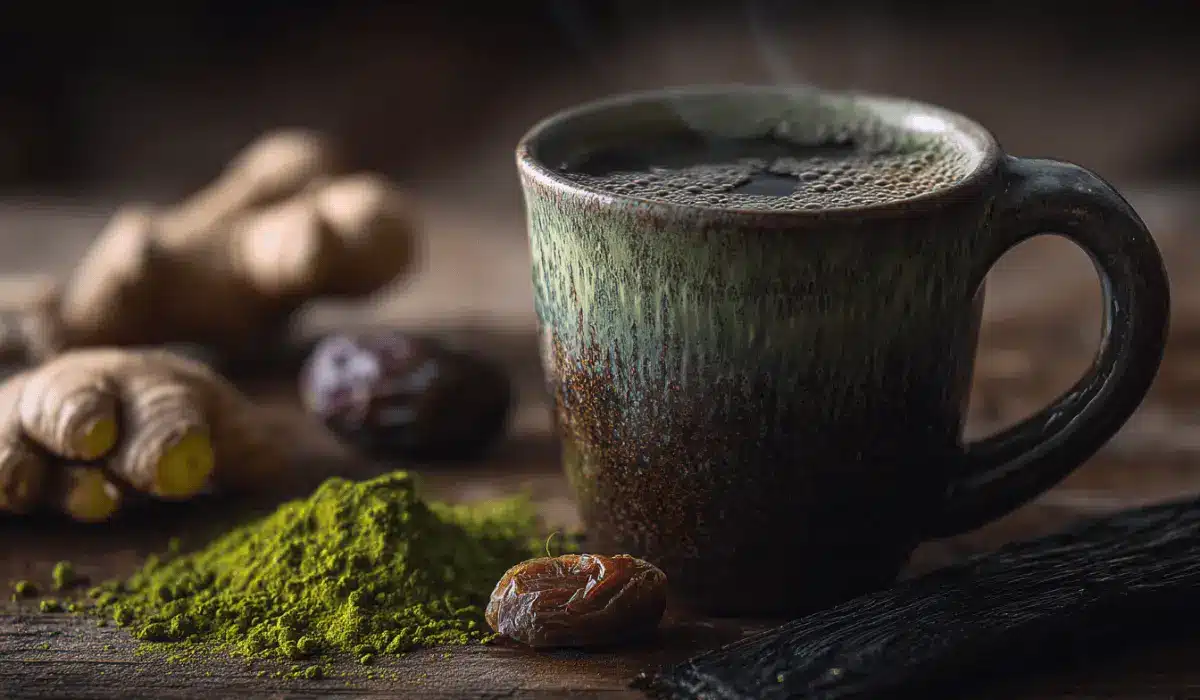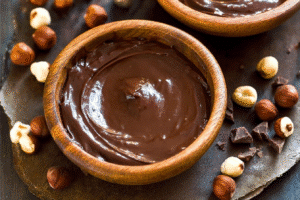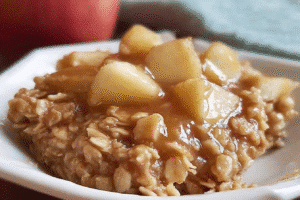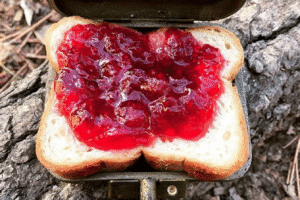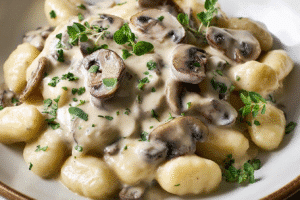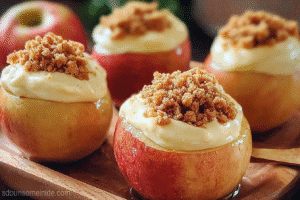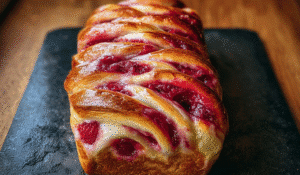
Tried that vinegar lemon thing. The viral one. Yeah. Tasted weird. Like something you drink because someone online said it helps. Not because it’s good.
People kept calling it Japanese. That’s what threw me.
I’ve cooked long enough to know vinegar and lemon isn’t really a thing in old Japanese recipes. Didn’t make sense. So I started poking around. Just to see.
Turns out the authentic Japanese Mounjaro recipe is its own thing. Not sweet. Not trendy. It’s warm. Salty. A little sour from this pickled plum they call umeboshi. Has matcha in it. And kombu, which is seaweed, but don’t let that scare you.
It’s weird. But in a good way.
Not a quick fix. Not a detox. Just… something that’s been around for a long time. Something people made on purpose.
The trendy ones here if you want it. This one’s different.
Table of Contents
Why You’ll Love This Authentic Japanese Mounjaro Recipe
- It’s warm and calming. You sip it slow. Kinda feels like soup, not tea.
- It won’t punch you in the throat. No vinegar burn. Just a smooth, brothy thing your stomach actually wants.
- It’s not something you chug and gag through. This is what you make when your body’s tired. Or your stomach’s off. Or you just want something that feels… old. Familiar, even if it’s not.
- Every ingredient wants to help. Matcha gives you energy, but gently—thanks to that L-theanine. Ginger and umeboshi are easy on the gut. Kombu’s full of minerals and that iodine kick.
- It feels good. Not just healthy. Not just trendy. Just good.
Every ingredient wants to help. Matcha gives you energy, but gently (thanks to that L-theanine). Ginger and umeboshi are easy on the gut. Kombu’s full of minerals and that iodine kick. If you want another way to sip your matcha, my Strawberry Matcha Latte hits the spot cold or hot.
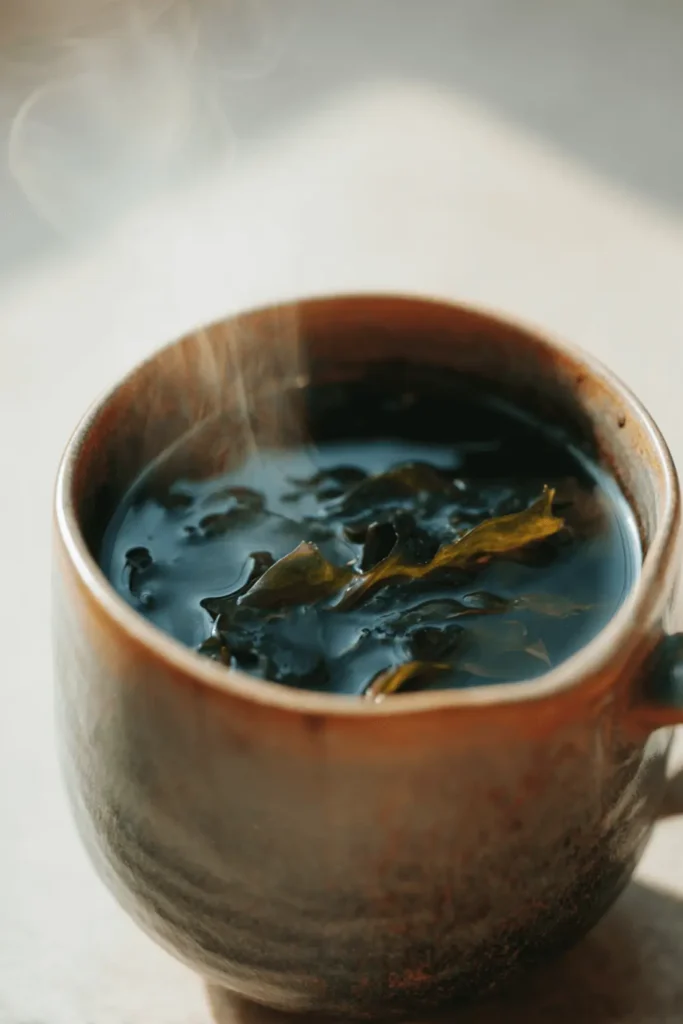
How to Make the Authentic Japanese Mounjaro Recipe (The Ritual)
The Authentic Ingredients: What They Are & Why They Work
Matcha
Used the good kind. Not the latte mix. The powder’s bright green when it’s fresh. You don’t steep it like a teabag. You whisk it in and drink the whole thing. Kind of grassy. Kind of bitter. It’s got caffeine but doesn’t slam you like coffee. More of a slow, steady awake. That’s thanks to L-theanine, which keeps you calm and focused, and EGCG, the antioxidant people talk about when they mention matcha and metabolism.
Umeboshi
Little pickled plum. Comes in a jar. Looks squishy and kind of intense. Smells strong. Tastes salty and sour at the same time. I mashed it up with a spoon. You don’t need much. They’ve used this stuff in Japan forever for stomach aches and long days. It’s fermented, so it’s full of probiotics. And it’s got citric acid, which helps with digestion and makes your mouth pucker like a warhead.
Kombu
Dried seaweed. Big flat strips. Smells like low tide when you open the bag, but don’t let that scare you. Once it soaks, the water turns cloudy and starts smelling like broth. That’s the umami coming out. It’s got iodine, which is good for your thyroid, and something called fucoxanthin. I looked it up—it’s a compound that’s been studied for burning fat around the belly. I’m not promising anything. Just saying there’s more going on here than just seaweed.
Fresh Ginger
You know this one. I’ve grated it into everything from stir-fry to hot toddies. Still works. It’s got that kick. Helps your stomach settle. The fancy names in it are gingerols and shogaols. I can’t pronounce them either, but they’re the reason ginger’s been used for ages to calm the gut.
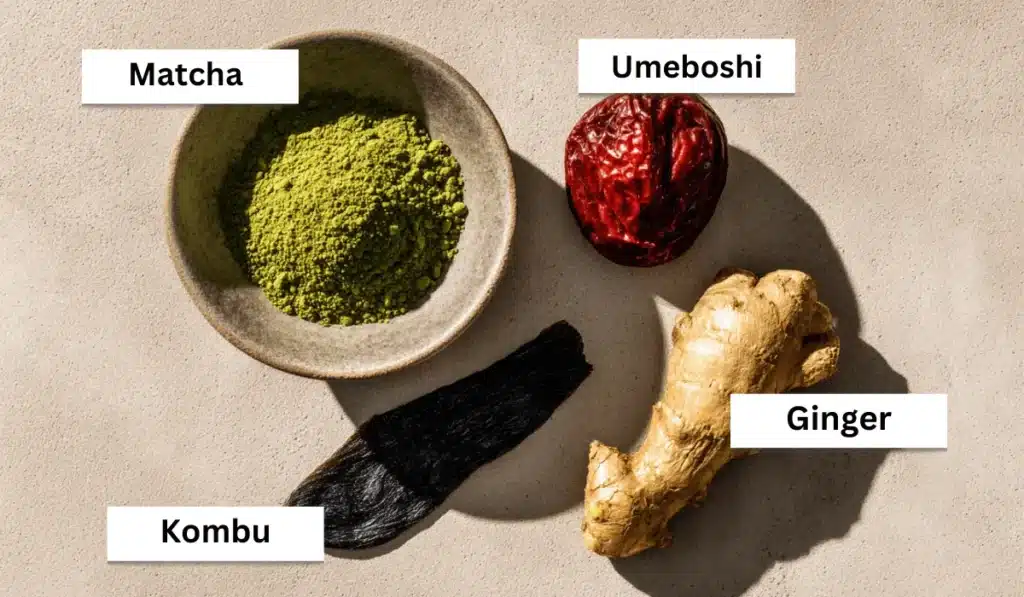
Step-by-Step (The Ritual)
Step One
Grab a strip of kombu (about the size of your thumb). Toss it in a mug. Fill it with warm water. Just from the tap is fine if it’s hot. No need to boil it. Then wait. Five minutes. Ten if you forget. The water gets cloudy and starts to smell like broth. That’s what you want. Don’t mess with it. Just let it sit.
Step Two
Find a small bowl. Dump in the matcha (about 1 teaspoon). Pour in a splash of that warm kombu water. Just enough to get it moving. Grab a whisk if you’ve got one. A fork works too. Mix fast—back and forth, not in circles—until it’s smooth with a little foam on top. No clumps.
Step Three
Kombu’s done. Pull it out and toss it. Drop in the mashed umeboshi (about half a plum or 1 teaspoon of paste). Grate in the fresh ginger (around 1 teaspoon, but eyeball it). Stir it up. Then pour in the matcha. One more stir and you’re there. It’s murky. It’s funky. It’s ready.
A Note on Sourcing & Storing
Where to Find These Ingredients
You’re probably not grabbing this stuff at the regular grocery store. I couldn’t, anyway.
Check an Asian market if you’ve got one nearby. That’s where I found the kombu and the umeboshi. They usually keep the plums in the fridge section. Sometimes they have the paste too—same flavor, easier to stir in.
Matcha’s a little trickier. The good stuff costs more, and the labels all say they’re the best. Look for “ceremonial grade” and avoid anything that’s dull green or brownish. Bright green is what you want.
If you don’t have a market close by, I dropped a few links below for what I use. Nothing fancy. Just the stuff that works.

How to Store the Ingredients
Matcha needs a cool, dark spot. Pantry’s fine if it’s not blazing hot in there. Once you open it, use it up within a month or two.
Kombu
I’ve had the same bag for like a year. Still fine. Just keep it dry. Mine’s in an old peanut butter jar in the pantry. Works.
Umeboshi
Once you open the jar, it goes in the fridge. Same if you’re using the paste. Not fussy. Just don’t leave it out. I shoved mine behind the mustard and forgot about it for two weeks. Still good.
What to Serve With This
Most days I just sip it by itself. Usually in the morning. If I need something more substantial that still feels healthy, my Chocolate Baked Protein Oats are a great pairing. But if I’m having it later, I’ll eat a soft-boiled egg with it. Maybe some plain rice. Leftover miso soup works too.
And if I’m still hungry after, I’ll grab a spoon of that Matcha Tiramisu I made last week. Not traditional, but it hits.
Fun Variations & Jason’s Pro-Tips
Fun Twists on the Authentic Recipe
Iced version
I forgot about my mug one morning and it went cold. Threw some ice in it just to see. Not bad. Weird at first, but kinda hits different when it’s hot out. If you’re in the mood for a different kind of cold treat, my Viral Peach Ice Cream Bars are another obsession.
If you find yuzu
Yuzu juice is hard to get, but man. If you do find it? Try a little in this. Way better than lemon. Smells wild. Sharp but not too much.
Japanese Mounjaro Smoothie
Had matcha, half a banana, splash of kombu water, bit of almond milk. Threw it in the blender with a dab of umeboshi paste. No clue what I was doing. Hit blend. It was thick. Little odd. Kinda worked. Wouldn’t serve it to guests, but I didn’t hate it.
Kombu-Plum Salad Dressing
Scooped some umeboshi paste into a jar. Poured in kombu water. Grated ginger. Bit of olive oil. Dash of vinegar. No recipe. Just felt like trying it. Shook it. Poured it. Greens didn’t taste boring anymore. That’s a win.
Love these ideas? Pin this post to your favorite recipe board on Pinterest so you don’t lose it! I’m always sharing new twists and visual guides over there.

Jason’s Pro-Tips & Troubleshooting
The Flavor’s Gonna Surprise You
Don’t expect sweet. This isn’t one of those spa water drinks. First time I had it, I made a face. Thought something went wrong. But I sipped it again. Then again. Then I started craving it. If it’s too much at first, just use half the plum. Ease into it.
About the Kombu and Iodine Thing
This part’s important. Kombu’s got iodine, and a lot of it. That’s a good thing most of the time. But if you’ve got thyroid issues, maybe check with your doctor before making this a daily thing. I’m not a doctor. Just a guy who reads labels.
Let Me Know What You Think
I wanna hear it.
If you’ve tried both, the lemon vinegar one and this real deal one, tell me what hit better. Did the umeboshi throw you off? Did the kombu grow on you? Did it make you feel any different?
Drop it in the comments. I read every one. Always curious what you’re tasting and tweaking.
Frequently Asked Questions
How is this authentic recipe different from the viral one with apple cider vinegar?
That viral one’s got lemon, vinegar, ginger, and water. This one doesn’t use any of that. No vinegar. No citrus burn. Just this version with matcha, kombu, umeboshi, and fresh ginger.
What does the authentic Japanese Mounjaro tea taste like?
Kinda strange the first time. It’s salty. A little sour. Warm. Feels more like broth than tea. Not sweet at all. Took me a few sips to get into it, but now I kinda crave it.
Is this the same as the fizzy kombucha drink I see in stores?
Nah. Not even close. Kombucha’s fizzy and sweet. This uses kombu, the seaweed. Totally different thing. No bubbles. No sugar. Just a slow, savory drink.
When is the best time to drink it?
Mornings work best for me. Empty stomach. But I’ve had it in the afternoon too when I was feeling off. No rules really.
Are there any health risks or side effects I should know about?
Yeah, kombu’s got a lot of iodine. That’s good most of the time. But if you’ve got thyroid stuff, or you’re not sure, just ask your doctor first. I don’t drink it every single day. Couple times a week is enough for me.
So, will this drink make me lose weight?
Not by itself. That’s not what it’s for. Matcha gives you steady energy. Kombu’s got minerals. Ginger and umeboshi help your gut. All good things. But if the rest of your meals are junk and you never move your body? This drink won’t change that. It’s a helper. A steady, simple thing you can do for your body. Not a miracle. Just something that fits into a routine that works.
For more cozy, comfort-food goodness and to see what other readers are making, come hang out with me on Facebook and Pinterest where the crumbs, tips, and love keep on rollin’.
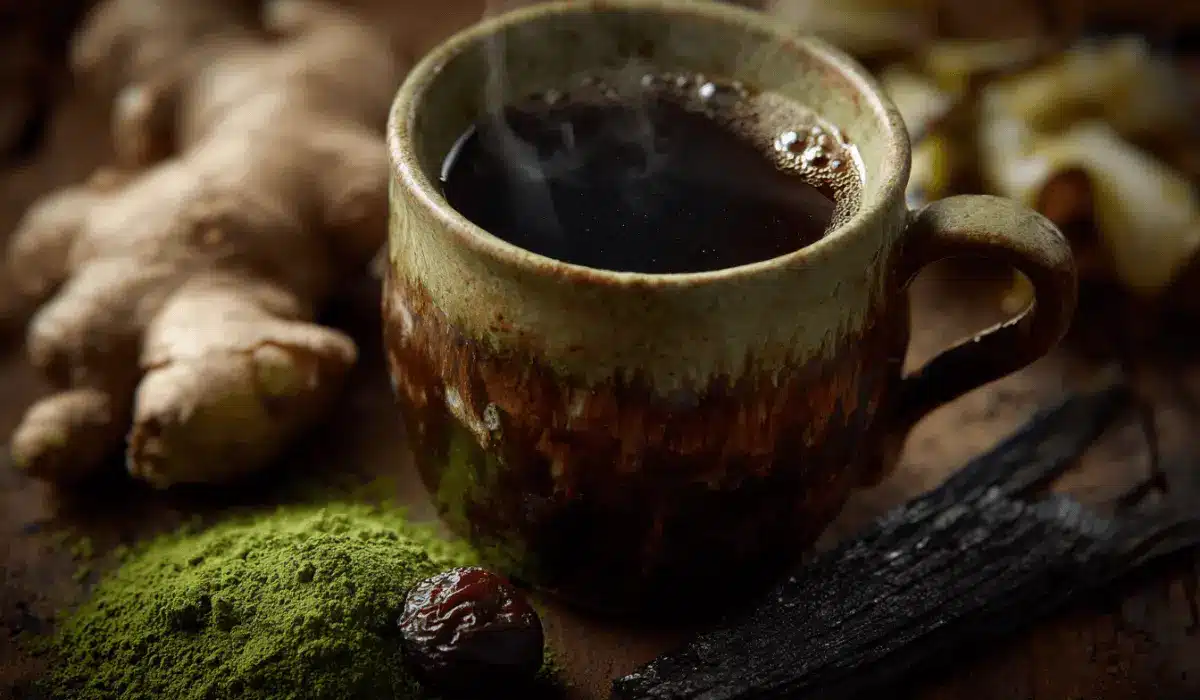
Authentic Japanese Mounjaro Recipe (Matcha & Umeboshi)
Ingredients
Method
- Place a strip of kombu into a mug and fill it with hot water from the tap. Let it steep for 5–10 minutes until the water turns cloudy and smells brothy.
- In a small bowl, add the matcha powder and a splash of the warm kombu water. Whisk or stir quickly back and forth until smooth and slightly frothy.
- Remove and discard the kombu strip from the mug. Add the mashed umeboshi and grated ginger to the kombu water. Stir well.
- Pour the prepared matcha into the mug. Stir again until everything is combined. Serve warm and enjoy.

